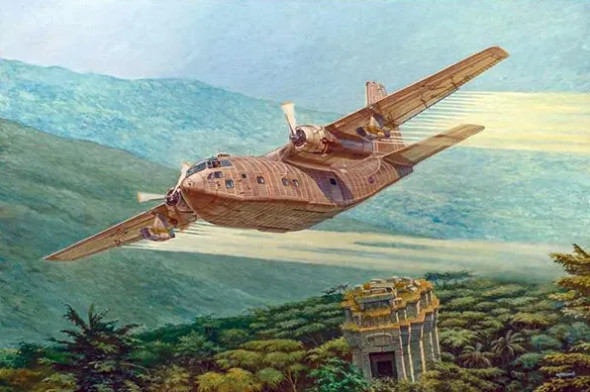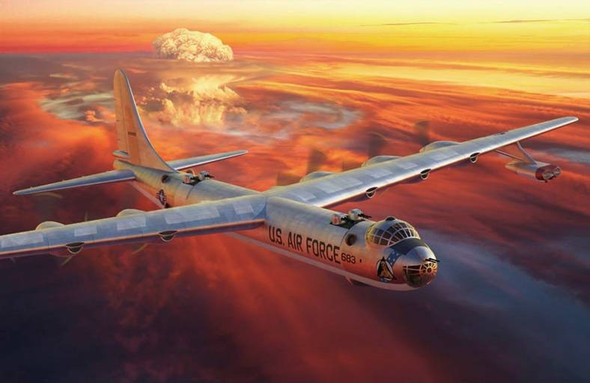Roden
ROD439 - Roden 1/48 Fairchild AU-23A Peacemaker
- SKU:
- ROD439
- UPC:
- 482301770119
- Condition:
- New
- Availability:
- In-Stock items usually Ship within the next business day
- Shipping:
- Calculated at Checkout
Description
ROD439 - Roden 1/48 Fairchild AU-23A Peacemaker
In 1959 the Swiss firm Pilatus developed a simple multi-purpose aircraft, with the formal name of PC-6 Porter. The early machines were piston engined and built in a short series; and two years later appeared the more modern PC-6 Turbo Porter, powered by the French Turbomeca Astazou II turboprop engine. The airplane proved to be quite successful and displayed highly capable characteristics; especially impressive was its capacity for short take-off and landing on the smallest and most poorly prepared air strips. In 1964 the construction of the airplane was further modernised. The more advanced PT6A-6A engine was installed, the tail fin was enlarged, the construction of the undercarriage was improved, and so on. This version was the B2-H4.
In the following years the type gained great popularity. Apart from Switzerland, it was purchased for the needs of air arms in Austria, Argentina, Australia, and various countries in the Far East and Africa. The American aircraft manufacturer Fairchild was also interested in this aircraft and purchased a license in Switzerland for its production.
At this time the military of the United States of America, which was involved in its protracted war in Vietnam, announced a competition for a basic airplane whose primary function had to be supporting operations against partisans. However, the Vietnam campaign ran to its inevitable conclusion and America had to abandon the country, an example of the political conditions of the Cold War between the super powers which entailed permanent support of satellite countries in the world's conflict zones. Under the provisions of the military tests for the Credible program two types were chosen - the Fairchild Porter and the Helio Stallion. Comparative tests of the two types took place in 1971 at the Eglin Air Base after which the proposal of the Fairchild firm was chosen for further development.
The XM-197 gun was installed in the airplane, a lightened version of the M-61 Gatling gun. It was fitted to a mobile installation in the doors of the freight compartment of the fuselage, which permitted a wide field of fire. A row of pylons was mounted under the wings of the airplane, where various armaments could be suspended: 250 or 500 pound bombs, unguided rocket launchers, napalm containers, cluster munitions, flare dispensers, searchlights or psychological warfare equipment. It was envisaged that the regular crew of the AU-23A Peacemaker (the name officially bestowed on the type) would consist of two pilots and a gunner, however according to necessity it could carry six additional passengers, or five fully equipped infantrymen, or three wounded men attended by a paramedic. Taking into account the possibility of landing on and flying away from the smallest areas, it needed to be a flying “jeep”, adaptable and comfortable in any military situation on the battlefield.
Soon a new build airplane was sent to Vietnam to conduct military tests in combat conditions, according to the program of aviation development in support of Pave Coin troops. The airplane was intensively used in helicopter escort, combat against mobile partisan groups, and special service operations. In particular it was intensively tested in take off and landing on poorly prepared air strips while carrying various loads.
In total, during these tests the airplane executed about two hundred missions. Half of them were conducted by American pilots, the remainder by the USA's South Vietnamese allies. A notable defect of the airplane which caused much criticism was its considerable vulnerability to enemy small arms fire, even such ordinary Soviet machine guns as the DShK, which Vietcong soldiers had in great quantity. Additionally the aircraft appeared poor at managing quick upward flight with maximum load. Nevertheless, Fairchild received an order for a small series of 15 such airplanes. The order was fulfilled but the Vietnam War was already finished by then. In 1972 all 15 AU-23A machines were sent on to the Davis-Monthan Air Force Base. They could have stayed there forever, however soon after the USA and Thailand signed a mutual military aid agreement, and all 15 airplanes were delivered to this South East Asia country. They were widely used by the Thai military for many years, mainly in the task of border patrol.
- Fairchild AU-23A Peacemaker USAF 21316 (s/n 72-1316) 4400th Special Operations Squadron, June, 1972.
- Fairchild AU-23A Peacemaker, Royal Thai Air Force, 1970th.
- Fairchild AU-23A Peacemaker JTh2-23/19/42082 (s/n 74-2082), 501sq, "Mosquito", of Wing 5 Prachuap Khiri Khan, Royal Thai Air Force.













